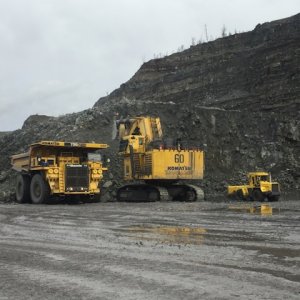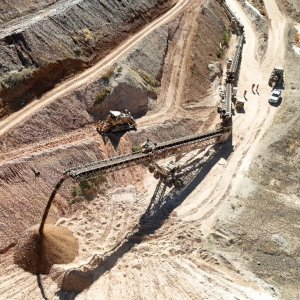Land Preparation Considerations for Miners

STORY INLINE POST
The mining industry represents approximately 4 percent of Mexico’s GDP. From 2001 to 2012, the Mexican government granted 28,807 mining concessions, encompassing approximately 61.8 million acres. According to the Ministry of Economy, 70 percent of Mexican territory is suitable for the development of mining projects, while only 25- 30 percent has been explored. Private investments in the mining industry amounted to US$3.3 billion in 2010, US$5.6 billion in 2011, US$7.6 billion in 2012, US$8 billion in 2013 and US$6 billion in 2014 and 2015, with significant amounts of investment coming from Mexican companies. Nevertheless, the sharp drop in commodity prices, oil and gas, the introduction of new royalties and taxes in Mexico, and the ongoing security problems in some regions have resulted in a significant decline in private investment in the country’s mining sector. It is expected that during 2016, total investment in mining in Mexico will amount to approximately US$4 billion. Mining in Mexico has become one of the top industries in the country. This industry continues to thrive with an annual production of US$13.9 billion, contributing to 1.6 percent of CPI. It generates 290,000 direct jobs and 1.5 million indirect jobs, and the leading minerals found in Mexico are gold, silver, bismuth, and fluorite.
The mining sector is one of the most regulated industries by environmental authorities and adheres to strict standards like ISO 14001, which regulates environmental impact generated by industry and is set by local and international regulatory agencies such as PROFEPA, the enforcement arm of Mexican environmental agency SEMARNAT. Most of the mines are outside of cities and lack infrastructure like roadways, water sources, and energy, meaning that right of way or access roads are needed. However, construction of these roads impacts the soil and communities along the way.
Environmental awareness has become increasingly common in Mexico, especially for this type of project. Mine sites can be huge and operators must establish facilities in order to meet their obligations and guarantee the correct management of resources and a favorable relationship with all affected organizations and communities. Although environmental agencies in Mexico have strengthened regulations in order to compensate for or mitigate any alteration within the area under construction there are also considerations to be made prior to construction, including permitting associated with the exchange of lands and follow up during the construction and operational stages of mines. It is important to mention that mines could use greenhouses and implement reforestation programs as a means of rehabilitating the surrounding ecosystem. Dams and leaching pads are considerable challenges for site preparation because correct water management and prevention of leaks must be guaranteed. Due to acid and other chemicals used in this water it is of the utmost importance that the proper infrastructure is constructed to contain it onsite in order to prevent environmental damage.
The new fiscal legislation in Mexico dictates that mining resources for the communities will be distributed by the government. However, complications may arise since a reduction in support for certain municipalities may create tensions between the communities and the mine. In Mexico, all mining activities are regulated by the Mexican Mining Law, originally published in June 1992. This federal law establishes conditions for the use, expiration, and cancelation of mining concessions. Under the law, all minerals found in Mexican territory are owned by the country, and private parties may exploit these minerals (except oil and nuclear fuel minerals) through a concession granted by the federal government.
The regulatory framework for the Mexican mining sector has undergone some major changes over the years. Under previous mining legislation, mining companies were subject to a complex web of rules and requirements. In 1961, Article 27 of the Constitution, covering exploration and extraction of mineral resources was enacted. The law mandated a minimum of 51 percent of national ownership for mining companies. This forced foreign investors to either sell their shares or establish themselves as Mexican companies. The law was further strengthened in 1975, when in addition to the mandatory 51 percent of national ownership, a minimum of 66 percent of national ownership was made mandatory for certain concessions.
However, in the 1980s, Mexico began a wave of significant economic changes that would continue over the following decades. In line with the changing economic landscape the regulatory framework was simplified to attract foreign investment. As a result, private investment has become the driving force of the Mexican economy. For the mining sector, the restrictions on foreign ownership of Mexican companies have been removed. Current law merely requires mining companies to be incorporated under Mexican law, to include exploration or exploitation of minerals under their corporate purpose, and to establish their corporate domicile within the Mexican Republic.
The Ministry of Economy exercises its authority on mining companies through the General Coordination of Mines, which in turn relies on the General Bureau of Mines. The Bureau, through its various subordinate agencies, administers the country’s mining law with respect to concessions, allotments, and national mining reserves. Mexico has balanced environmental policies with well-tested mineral tenure laws. The country’s federal government works toward sustainable development and environmental protection through SEMARNAT, which works toward the following targets:
• Conservation of ecosystems and their biodiversity
• Prevention and control of pollution
• Management of water resources
• Actions to combat climatic change
In Mexico, mining companies must follow the environmental regulations laid out by the Ministry of Labor and SEMARNAT. SEMARNAT has aligned its policies to internationally accepted standards so that mining operations have a minimal effect on the environment. The industry is committed to developing sustainable projects that prioritize the safety of mine workers and the protection of the environment.
Under the Mexican Mining Law, concessionaires must adhere to federal environmental regulations, and their activities are subject to an environmental review. GDI is working with the main mining operators that are required to prepare and file an environmental impact statement for all extraction operations as well as for non-standard exploration work, which must subsequently be reviewed by regulatory authorities.
























